TALKING ABOUT ARCHIVES Vol.27
The three works Kosuke Kawamura (Collage Artist) wants to keep as part of the archive
Combining elements as materials from the boundless archive
to create new works of art is collage artist, Kosuke Kawamura.
These days, he is working in Japan as well as over the world;
which creators influenced him in his work, leading him to where he is?
Searching the roots of creativity of artists gathering attention these days will surely help you enjoy art even more. To do so, today we take a look at three works from the bookcase (that is his mind), sitting in his atelier, to see which works he wishes to leave for the archive.
The works that influenced Kosuke Kawamura and the reasons why!

1_ A master to look up to as a collage artist
[WINSTON SMITH]
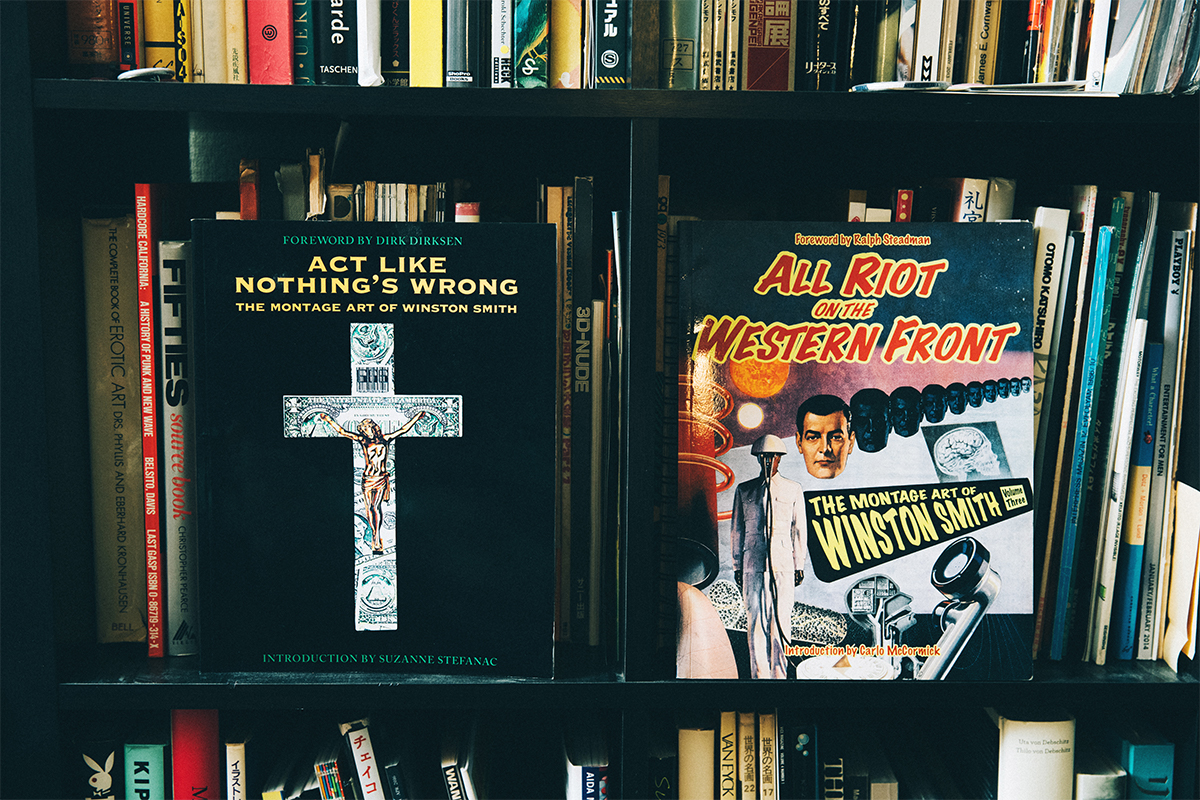
WINSTON SMITH's 『ALL RIOT WESTERN FRONT』(Right)
Mr. Kawamura, working as a collage artist, will today introduce us to three artists that have become the base of his work; talented photomontage artist Linder Sterling, Gee Vaucher, who is known for his artworks using glass and finally, WINSTON SMITH. WINSTON SMITH is special to him because he is the person he spent time learning the art of collage from living at his home in Kawamura’s early twenties, a man who Kawamura has declared to be his teacher.
“I first heard about him when I was around fifteen. I was a big fan of punk and hardcore music and I’d be lending and borrowing CDs among my friends. Then this one time, when I borrowed music by LARD, who were published on the same label as the Dead Kennedys; I was struck by the design of the album jacket. That was my first view of WINSTON’s artwork.”

“A little while later, I learned the artwork I’d seen was actually made by cutting and pasting pieces together, which shocked me heavily once more. That was my initial impetus and afterwards I got completely addicted with his work. He’s the reason I started doing collage art.”
At this part of the interview, I started wondering something. While WINSTON’s artwork definitely has something that draws people in, I thought that Kawamura must’ve encountered other amazing pieces of collage art before as a big fan and a person knowledgeable of punk music. As everyone knows, there’s a mountain of collage art pieces used for this genre. Why was he drawn to WINSTON in specific?
“Collage art as a genre started over a hundred years ago, and the trend is especially present as an element of punk music. For example, I was already aware of the collage art on the clothes made for the Sex Pistols and Seditionaries, but WINSTON’s art was different from all of those.”
Kawamura then continued to explain. “Up until then, the artwork I’d seen of punk bands was made by cutting apart magazines and just pasting them like that, collage was not a particularly difficult art. But WINSTON’s works changed my view of collage art in a big way. His art was expressing an elaborate world view almost like using paint. When I first saw the LARD album jacket, I was completely convinced it was a painting. Another thing was the message it expressed. Punk people often include satirical and political messages in their works, but they don’t assert it so directly, they express it mixed with a sense of humor. That’s why the people who see it don’t feel unpleasant looking at them. But in the end their message does pull through. That feeling of balance is perfect to me.”
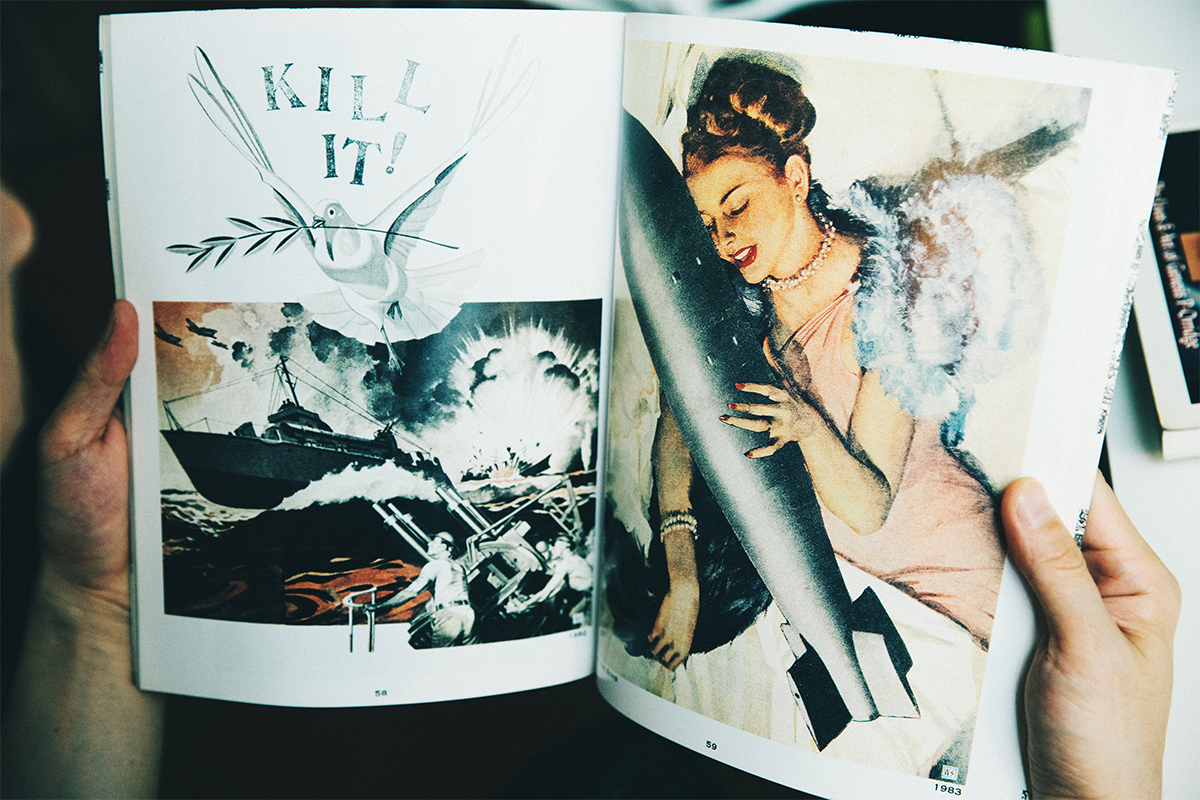
2_ The people who established street culture in France
[Loulou Picasso & Kiki Picasso]

LOULOU PICASSO and KIKI PICASSO's 『ENGIN EXPLOSIF IMPROVISE』(Right)
The second artist he introduced to us was a couple with a very cute name, Loulou Picasso and Kiki Picasso. To explain these two, Kawamura started telling us about 21 years ago, when he himself was around twenty, about a musician in the industrial genre he used to listen to a lot, Genesis P-Oriridge.
“This was the same situation as with WINSTON; I was very impressed by the design of the album called psychic tv that he made. Back then, compared to these days, it was hard to get information on these topics. Looking into it, the only thing I could find out was that the person responsible for the album artwork was someone called Loulou Picasso, and that he was working as a unit together with Kiki Picasso.”
Six years later, when he turned 26, he had a chance meeting.
“ A female friend of mine was getting married and moving to Switzerland. So when I was visiting her there to celebrate, I was introduced on the first day to her husband who was running a second-hand book shop. There was a moment her husband and I were alone together by chance and because I could only speak really easy English and Swiss, I got real awkward and ended up opening a book that just happened to be there.”
“It was an omnibus, combining the works of a lot of different artists. All of them were interesting so I was looking at them very closely when I saw an art piece that was close to something I’d seen before. Looking at the credits, it turned out to be a work by Loulou Picasso & Kiki Picasso. Asking my friend and her husband later, I found out they were both part of a group called BAZOOKA and they gave me some more specific information as well. Hearing that story, it made me even more interested than before.”
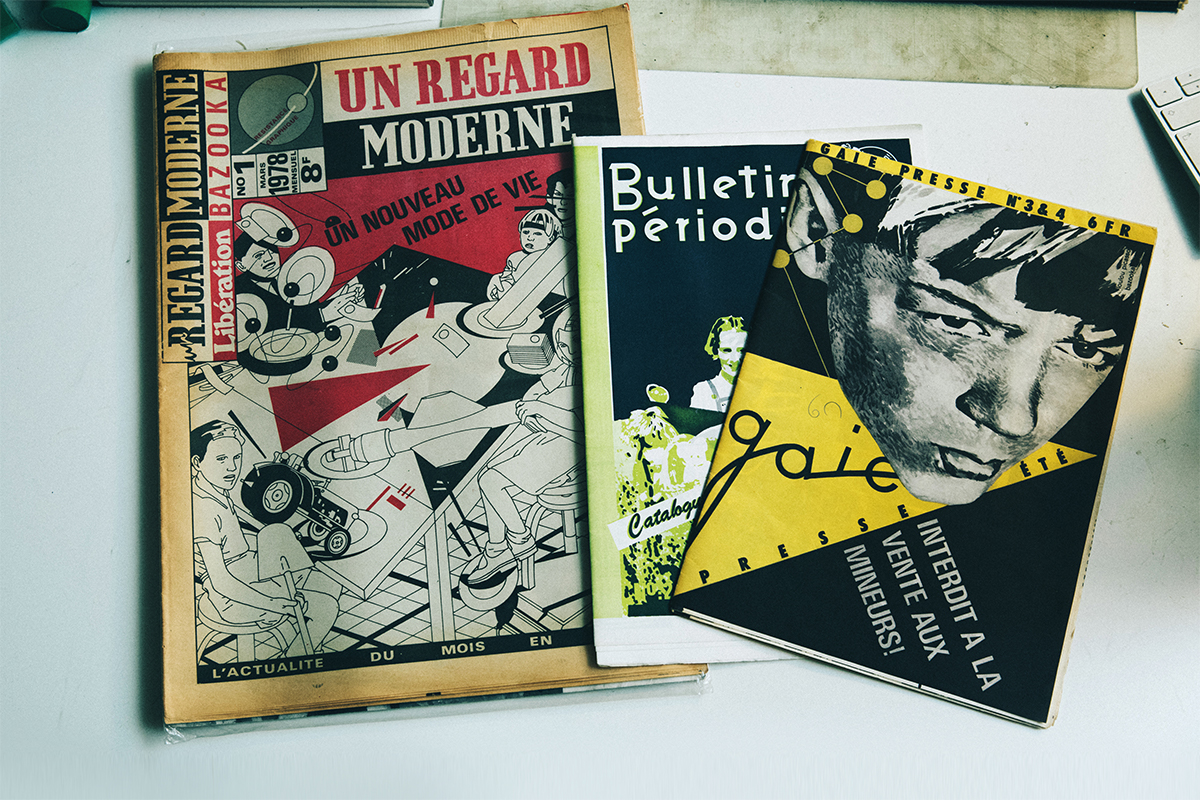
“BAZOOKA was a group of artists active in France in the seventies and eighties. Loulou Picasso and Kiki Picasso both joined the group when they were only 19 and 22 respectively and started working together as a unit after a while. Both of them ought to be in their sixties by now (2020). “BAZOOKA was a kind of punk group where anarchists joined, but I got a completely different impression from them compared to the punk from America and England I’d seen before. They were an intelligent group of anarchists, so to say. For example, they would have an extreme art piece printed on a newspaper page, sharing their message. The next day, it would be delivered around town. Graffiti is usually done by drawing or printing on walls or utility poles, but they used the newspaper. It was really interesting to me to use such an honor’s student-like way of distribution.”
Furthermore, Kawamura was also impressed by their potential in self-production.
“They seem to have used some other artist names aside from Loulou Picasso and Kiki Picasso; I know of at least twenty. No one is really sure what the total is. That anonymity is also something that attracts people. I also read in a magazine before that the reason they use PICASSO in their unit name is because one of them is actually related to the artist Pablo Picasso. Picasso’s descendants are doing art in France, that story is something that really gets me excited.”
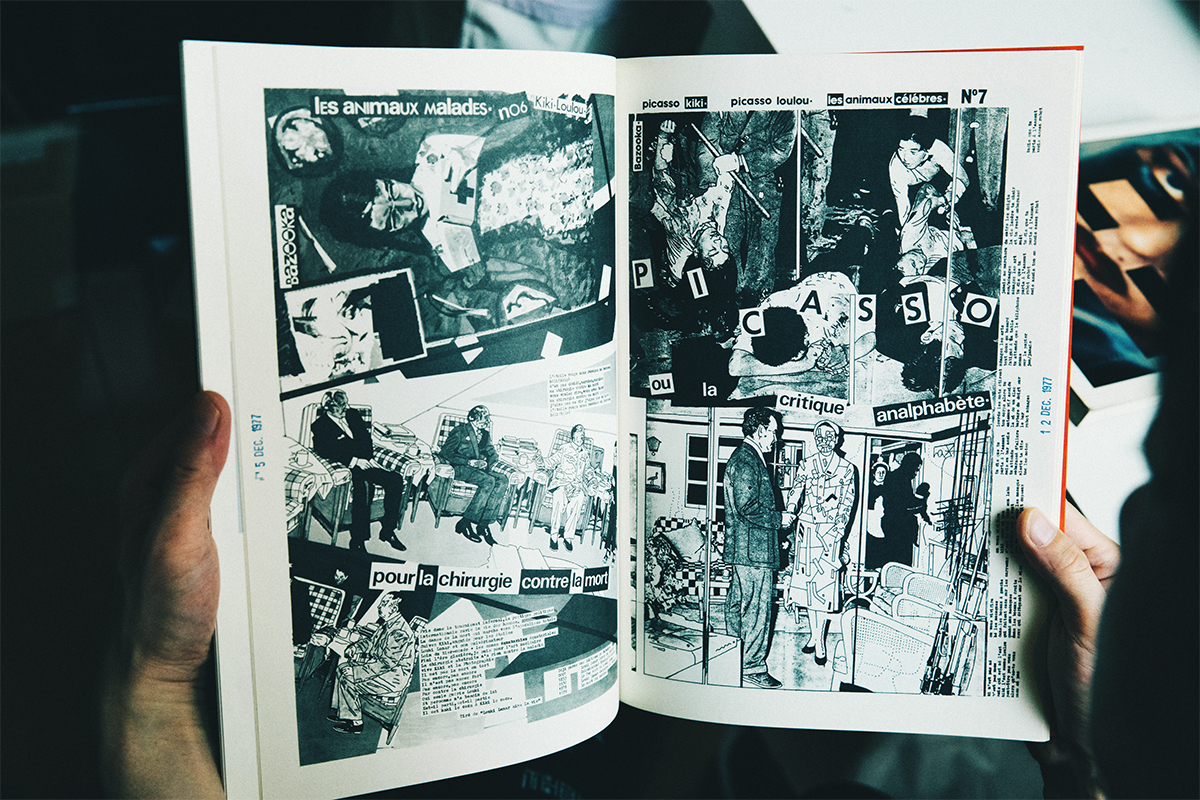
More than ten years after he went to Switzerland, Kawamura gets to learn something new about them again. “Last year I went to France in January on a job, and was actually able to meet Kiki Picasso through fortunate circumstances. They told me that time that the whole story about being related to Pablo Picasso is a bald-faced lie. From their name you’d kind of expect a beautiful woman, but the artist was actually an older man! But I wasn’t disappointed at all. Learning all this got me even more interested in their lot. These days there’s other mysterious artists like Banksy, but I personally think they’re the avant-garde of people like him. I plan to keep following them for years to come.”
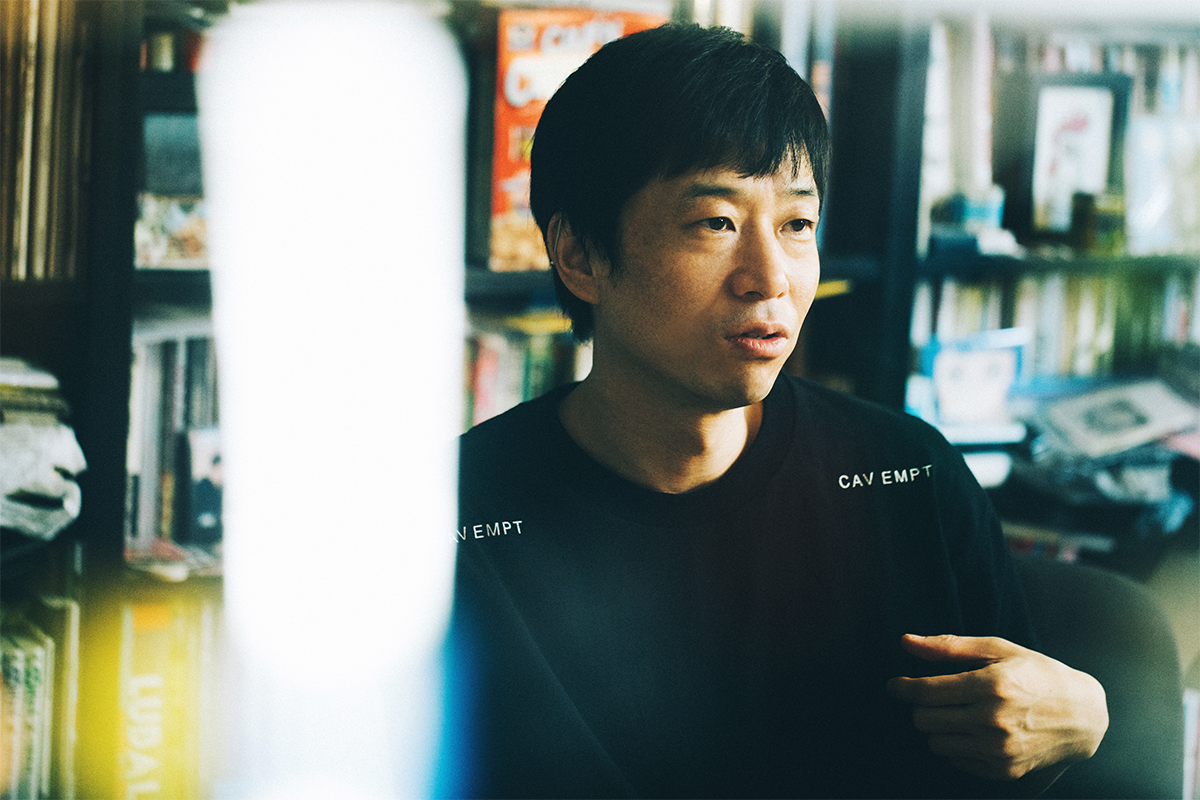
3_ The emperor of “Heta-uma”, who stimulated him, even in changing his lifestyle.
[Teruhiko Yumura]
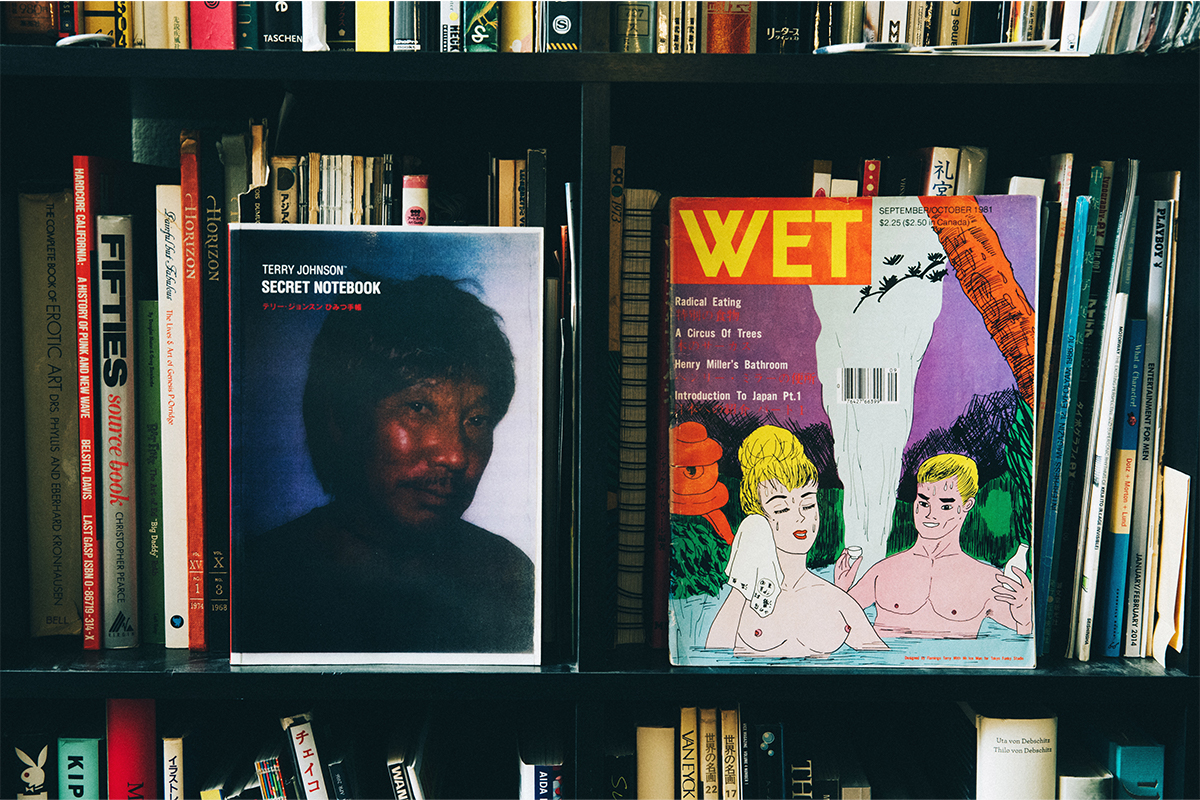
Terry Johnson's 『WET magazine』(Right)
“A lot of the people I respect personally have been influenced by the same person. If he hadn’t been there, the idea of the creator in Japan might’ve been a little bit different from what it is today.” Introducing him like this, he starts talking about illustrator and designer as well as manga artist Teruhiko Yumura, who also used pen names like Terry Johnson, GONZO and FLAMINGO TERRY. In 1975 he started Flamingo Studio, working with some people we all know like illustrator Hiroshi Nagai, copywriter Shigesato Itoi and art director Masami Akiyama. He is still working as a creator using this studio as his base of operations. “There’s this term ‘heta-uma’, which was definitely pioneered by Yumura. I see him as the emperor of ‘hema-uma’. He started that style twenty, thirty years ago, back when there was no concept yet of ‘lame but cool’; not just as a method of self-satisfaction, but also while being recognized by his peers which is amazing.”

Yumura’s charm, according to Kawamura is not just in his art style but even continues into his lifestyle. “He is also very well known as a person who looked into black music a lot. The last time when I met him was about ten years ago, but even then while he was already deep into his sixties, he would be walking around in a huge XL-sized T-shirt which had been ironed well combined with a pair of wide flashy red trousers. Wearing a pair of Airforce 1 Nikes, also flashy red. Also, he goes to get his hair cut twice or thrice a week, in the style of black rappers. I really respect his style, it’s really cool.”
He also tells us this. “There’s a heap of rumors going around like ‘you know that persons’ work was based on this original work by Yumura’ or ‘he goes to the roofs of office buildings to get his skin tanned’ all sorts of things where you can never tell which is real and which is not. But becoming the center of conversation no matter what he does means he has charisma as a human being, right? Being mysterious like that is also part of his charm.”
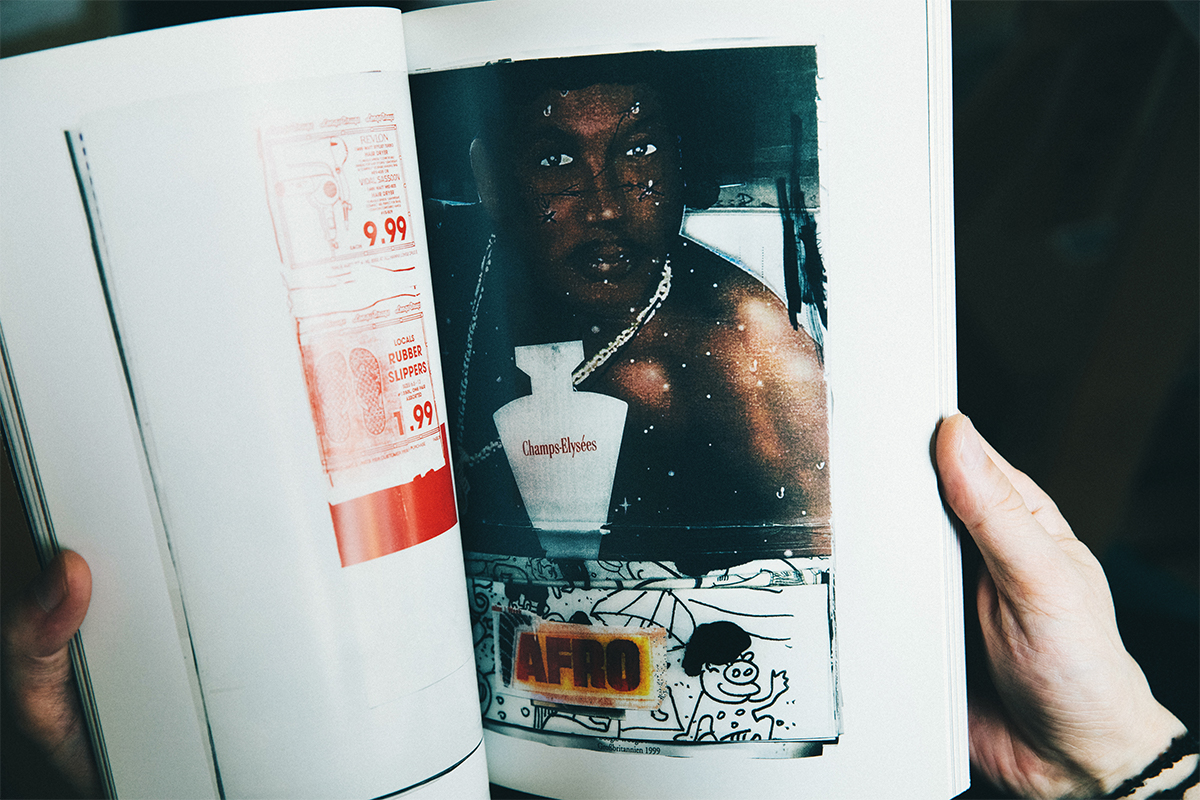
We finished today’s interview talking about these artists once more.
“Actually meeting them in person and talking to them, I felt we had a lot in common. These people were the people I’d been interested in from my teenage years. Obviously they themselves had improved their skills way beyond when I was a kid and had kept walking one step ahead. But I think none of them came forward to say ‘look at me, I’m awesome, right?’. So I as a younger person never felt less worthy and also never felt a barrier between me and them. Turning sixty or seventy, they can still collaborate on a flat basis with kids of twenty. These people are living valuing ‘doing stuff because it’s interesting’. One of my goals is also to be like that some day.”
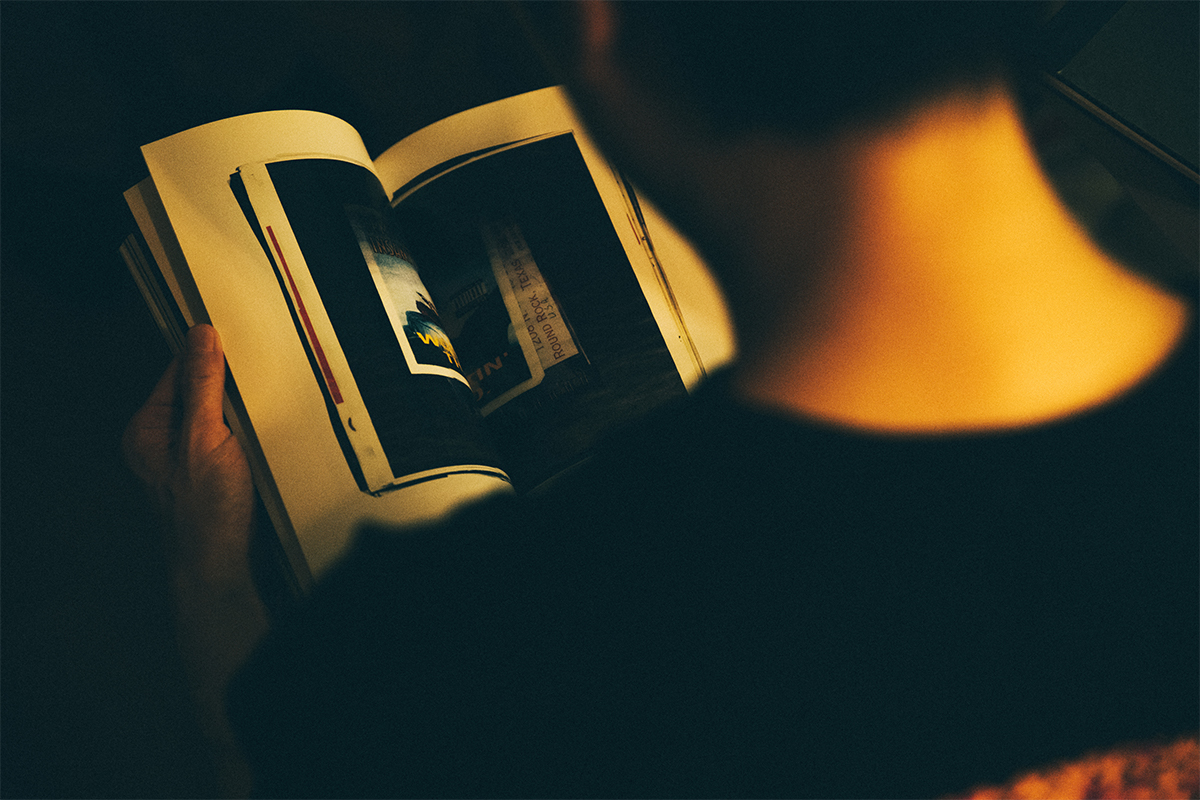
KOSUKE KAWAMURA
An artist using old newspapers and company advertisements, magazines as materials, taking them apart with a design cutter and a shredder to create minute and intricate collage art pieces. In his art works, grotesqueness and eroticism play a big role, but they still manage to give a fun impression to those who look at them. That might be inherited as well from the man he looks up to as a teacher, WINSTON SMITH.
Photo_ Takaki Iwata
Text_Hisanori Kato
